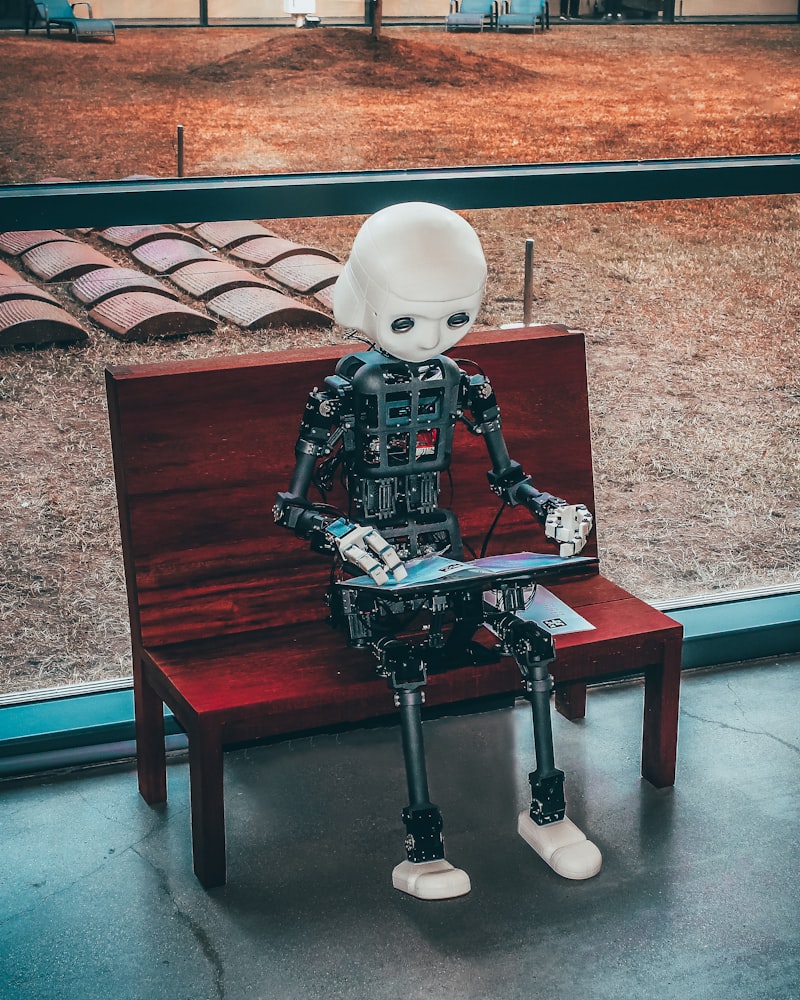In today’s competitive landscape, businesses are constantly seeking ways to stay ahead. AI offers a game-changing advantage by streamlining processes and predicting market trends with remarkable accuracy. By analyzing vast amounts of data in real-time, AI can uncover consumer preferences, identify gaps in the market, and even forecast demand before it arises.
One of the most intriguing aspects of AI in product development is its ability to enhance creativity. Far from replacing human ingenuity, AI acts as a catalyst, generating ideas and concepts that might have been overlooked. Imagine having a virtual brainstorming partner who can sift through millions of design iterations in seconds, offering insights and suggestions that spark innovation.
Moreover, AI optimizes the entire product lifecycle. From initial design to prototyping and testing, AI-driven simulations can predict performance, durability, and even user experience metrics. This not only accelerates time-to-market but also minimizes costly errors that could arise during traditional testing phases.
Furthermore, AI empowers personalization like never before. By analyzing consumer behavior and feedback, AI algorithms can tailor product features to individual preferences. Whether it’s recommending the perfect customization options or anticipating future needs, AI ensures that each product feels uniquely suited to its user.
Breaking Boundaries: How AI Revolutionizes Product Development Processes
AI’s impact on product development is akin to having a skilled assistant who can sift through vast amounts of data with lightning speed and pinpoint accuracy. Traditional methods often relied on manual analysis and human intuition, which, while valuable, could be time-consuming and prone to bias. With AI, algorithms can analyze market trends, consumer preferences, and even predict future demands based on real-time data. This ability not only speeds up decision-making but also enhances the precision of product development strategies.
One of the most awe-inspiring aspects of AI in product development is its ability to simulate scenarios and predict outcomes with a level of accuracy that was once unimaginable. By leveraging machine learning models, companies can simulate product performance under various conditions, test prototypes virtually, and even optimize designs before physical production begins. This not only reduces costs associated with trial and error but also accelerates time-to-market significantly.
Moreover, AI empowers product developers to personalize offerings at scale. Through advanced analytics and natural language processing (NLP), AI can analyze customer feedback, social media interactions, and market trends to tailor products to specific consumer needs and preferences. This personalized approach not only enhances customer satisfaction but also fosters brand loyalty in an increasingly competitive marketplace.

In essence, AI is not just a tool but a transformative force that is reshaping how products are conceptualized, developed, and delivered to consumers worldwide. By harnessing the power of AI-driven insights, businesses can innovate faster, adapt to market changes more effectively, and ultimately create products that resonate deeply with their target audiences.
The future of product development is here, driven by the boundless possibilities of artificial intelligence. As businesses continue to integrate AI into their processes, the potential for innovation knows no bounds. What new horizons will AI help us explore next? The journey has just begun.
From Concept to Market: AI’s Impact on Swift Product Iteration
In the fast-paced world of product development, time is money, and innovation is key. AI has become the secret sauce that accelerates every stage of the product lifecycle. From the initial brainstorming of ideas to the final rollout, AI algorithms analyze vast amounts of data to uncover insights that humans might miss. This means companies can identify market trends early on and tailor their products to meet evolving consumer demands.
Imagine you have a brilliant idea for a new gadget. Traditionally, bringing this idea to life would involve months of market research, prototyping, and testing. But with AI, you can simulate various scenarios and predict consumer behavior with unprecedented accuracy. This allows you to refine your concept swiftly, ensuring it resonates with your target audience from day one.
Once the concept is solidified, AI continues to play a crucial role in optimizing the product design. Using machine learning algorithms, designers can generate and evaluate multiple prototypes in a fraction of the time it would take manually. This not only speeds up the iteration process but also enhances product quality by identifying potential flaws early on.
But AI’s impact doesn’t stop there. When it comes to manufacturing and logistics, AI-powered systems can streamline supply chains, predict maintenance needs, and even automate production processes. This efficiency not only reduces costs but also ensures products reach consumers faster than ever before.

In today’s competitive market landscape, companies that embrace AI for swift product iteration gain a significant edge. By harnessing the power of artificial intelligence, businesses can innovate faster, reduce time-to-market, and stay ahead of the curve. As AI continues to evolve, its role in product development will only grow, shaping the future of innovation across industries.
AI-Powered Insights: Unveiling the Future of Product Design
AI-powered insights in product design go beyond traditional market research. They delve into vast amounts of data, analyzing consumer behavior patterns, market trends, and even social media sentiments in real-time. This wealth of information allows designers and manufacturers to anticipate consumer needs before they even arise, giving them a competitive edge in a fast-paced market landscape.
One of the most exciting aspects of AI in product design is its ability to generate actionable insights from complex data sets. By leveraging machine learning algorithms, AI can identify hidden correlations and trends that humans might overlook. For example, AI can analyze customer feedback across multiple platforms and extract valuable insights about user preferences, pain points, and expectations. This wealth of data empowers designers to create products that are not only visually appealing but also highly functional and intuitive.
Moreover, AI enables iterative design improvements at an unprecedented speed. Through simulations and virtual testing, designers can quickly prototype and refine product concepts without the need for extensive physical prototyping. This accelerates the design process, reduces costs, and minimizes time-to-market, all while ensuring that the final product meets or exceeds consumer expectations.
In essence, AI-powered insights are transforming product design into a dynamic and responsive process. They enable designers to harness the power of data-driven decision-making, leading to products that resonate deeply with consumers. As AI continues to evolve, so too will its impact on product design, shaping a future where innovation knows no bounds.
Efficiency Unleashed: AI’s Crucial Role in Streamlining Product Development
Imagine this: traditionally, product development involved extensive trial and error, countless iterations, and lengthy timelines. But with AI in the driver’s seat, things are different. AI acts as a powerful ally, crunching vast amounts of data at speeds humans could only dream of. It identifies patterns, predicts outcomes, and optimizes processes with a precision that’s almost uncanny.
Take design, for instance. AI-powered algorithms analyze customer feedback, market trends, and competitor offerings in real-time. This wealth of information isn’t just data; it’s actionable insights that designers can use to create products that resonate deeply with consumers. From initial concept to final prototype, AI ensures that every step is backed by data-driven decisions, minimizing risks and maximizing innovation.
Moreover, AI doesn’t stop at design—it extends its capabilities to supply chain management and production. By forecasting demand accurately and optimizing inventory levels, AI helps companies reduce wastage and keep shelves stocked with the right products at the right time. This efficiency not only cuts costs but also enhances customer satisfaction by ensuring products are readily available when needed.
Innovation is the lifeblood of product development, and AI fuels it like never before. By automating repetitive tasks and offering insights that lead to breakthroughs, AI empowers teams to focus on what they do best: innovating. It’s like having a tireless assistant who sifts through mountains of data to uncover hidden opportunities and streamline processes.
Innovation Redefined: AI’s Contributions to Cutting-edge Product Prototyping
Imagine a world where the limits of creativity meet the precision of technology. This is where AI’s role in cutting-edge product prototyping truly shines. AI, or Artificial Intelligence, has revolutionized the way prototypes are developed, pushing boundaries and redefining innovation in product design.
At its core, AI brings a blend of predictive analytics, machine learning algorithms, and advanced simulations to the prototyping process. It’s like having a supercharged brainstorming partner who can sift through massive datasets in seconds to identify patterns and insights that human minds might overlook. This capability not only accelerates the prototyping phase but also enhances its accuracy, making it possible to foresee potential issues before they manifest in physical form.
One of the most impressive feats of AI in prototyping is its ability to simulate real-world conditions with remarkable fidelity. Whether it’s testing the aerodynamics of a new car model or simulating user interactions with a smartphone interface, AI-driven simulations provide invaluable feedback early in the design process. This saves time, reduces costs, and minimizes the environmental impact associated with traditional trial-and-error methods.
Moreover, AI doesn’t just stop at simulations; it actively contributes to the creative process itself. By analyzing market trends, consumer preferences, and even competitor strategies, AI helps designers and engineers make informed decisions that resonate with the target audience. It’s like having a crystal ball that not only predicts future trends but also suggests innovative solutions that captivate and delight consumers.
In essence, AI is more than just a tool; it’s a catalyst for innovation. By harnessing its computational power and analytical prowess, businesses can leapfrog traditional barriers to creativity and usher in a new era of groundbreaking products. From conceptualization to execution, AI enables a seamless journey where ideas evolve into prototypes with unprecedented speed and precision.
Data-Driven Decisions: Harnessing AI for Smarter Product Development Strategies
AI isn’t just a buzzword anymore; it’s the driving force behind smarter product development strategies. By analyzing vast amounts of data in real-time, AI algorithms can uncover patterns and trends that humans might miss. Whether it’s understanding consumer preferences, forecasting market demands, or optimizing production processes, AI empowers businesses to make informed decisions swiftly.
One of the most compelling aspects of leveraging AI in product development is its ability to enhance customization. Imagine a scenario where AI analyzes customer interactions across various platforms, from social media to online reviews, to create personalized product recommendations. This level of customization not only boosts customer satisfaction but also increases brand loyalty.
Moreover, AI can significantly streamline the product development lifecycle. From ideation to launch, AI-powered tools can simulate scenarios, conduct virtual tests, and even predict potential challenges. This not only accelerates time-to-market but also minimizes costly errors along the way.
Think of AI as your virtual assistant, tirelessly crunching numbers and analyzing data points to provide you with actionable insights. It’s like having a crystal ball that helps you anticipate market shifts and adapt your strategies proactively.
In essence, harnessing AI for smarter product development isn’t just about embracing the latest technology; it’s about staying competitive in an ever-evolving market. By integrating AI into your strategy, you’re not only improving efficiency and accuracy but also setting the stage for innovation that resonates with your target audience.
The AI Advantage: Accelerating Time-to-Market for New Products
Imagine having a virtual assistant that analyzes market trends, customer preferences, and competitor strategies in real-time. That’s the power AI brings to the table. By harnessing machine learning algorithms, businesses can swiftly identify gaps in the market and seize opportunities before their competitors even know they exist.
One of the key advantages of AI is its predictive analytics capabilities. By crunching historical data and predicting future trends, AI enables companies to forecast demand with remarkable accuracy. This foresight not only streamlines production processes but also ensures that products hit the shelves at the optimal time to maximize sales.
Moreover, AI empowers businesses to optimize their supply chains and logistics. From predictive maintenance that prevents costly downtimes to route optimization algorithms that minimize delivery times, AI-driven solutions are redefining efficiency across the board.
But perhaps the most impactful aspect of AI in accelerating time-to-market is its role in product development itself. Traditionally, developing a new product from concept to launch could take months or even years of iterative testing and refining. AI changes this by automating prototyping, simulating scenarios, and even predicting consumer feedback based on initial prototypes. This iterative process is not only faster but also more precise, ensuring that the final product meets customer expectations from the get-go.
AI isn’t just a tool for enhancing productivity—it’s a catalyst for innovation. By leveraging AI technologies, businesses can shorten development cycles, reduce time-to-market, and stay ahead in today’s hyper-competitive environment. As AI continues to evolve, its impact on accelerating product launches will only grow stronger, reshaping industries and setting new benchmarks for speed and efficiency.
Frequently Asked Questions
What are the key ways AI enhances product development
Learn how AI enhances product development through improved data analysis, predictive insights, automated processes, and enhanced customization, leading to faster innovation cycles and better market alignment.
What role does AI play in predicting market trends for product development
Learn how AI leverages data analysis and machine learning algorithms to forecast market trends, guiding product development decisions with insights into consumer behavior, preferences, and market dynamics.
How can AI improve product design and iteration processes
Learn how AI enhances product design by optimizing iterations through predictive analytics, user behavior insights, and automated prototyping. Discover efficient ways to streamline development cycles and enhance product features using AI-driven data analysis.
How does AI assist in optimizing production and supply chain management
Discover how AI improves production and supply chain management efficiency through data analysis, predictive insights, and automation. Learn how AI-driven systems enhance decision-making, reduce costs, and streamline processes to meet market demands effectively.
Can AI help in analyzing customer feedback and improving products
Learn how AI can enhance product development by analyzing customer feedback, extracting valuable insights, and guiding improvements.


